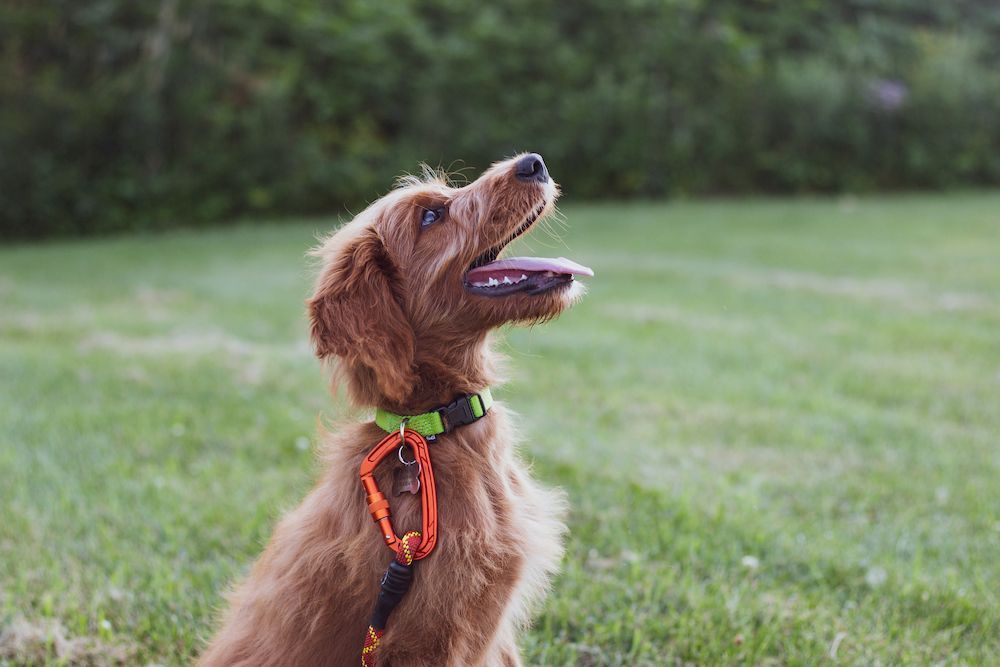
If you ever want to take your pooch on an off-leash outing, teaching your dog to come when called is necessary. Don’t even try to give your canine the privilege of off-leash freedom until the two of you have mastered this skill.
But how do you teach to obey the “come” command? And why is it important? Read this article to find out!


@michelangeloop / FreePik
Why does My Dog need to learn this Command?
Training will keep your canine safe. As a pet owner, this should always be your number one concern when taking your dog out in public.
Let’s consider a few examples that will help you understand why teaching your dog to come is vital.
Directs Away from Dangers
Picture taking your furry friend to the local park. What if your dog somehow manages to escape the enclosed area when another owner opens the gate? If your dog gets loose, he or she might head straight to the parking lot.
That could be a terrifying moment if you can’t trust your dog to obey the “come” command. But an obedient canine will turn around and return to you when called, which will direct you away from the source of danger.
Keeps You in Control
Some locations allow being off-leash in open areas. One example of this is a beach.
You might feel that you have no control in those types of situations. After all, your dog could quickly go running off into the distance. However, if your pet knows to come when you call, you remain in control even in off-leash settings.
This control is essential, even in an enclosed area, like a park. If your dog tends to get a little too rowdy with others, you might need to break them up before things get too crazy. You can do this by telling to come back to you..
Use the Leash When Necessary
We have a few essential reminders before diving into the next section.
- You don’t have to let off the leash even when it’s legal. If you are still working on teaching this command, you should wait to unclip that leash until you know your dog can be trusted to obey the “come” command.
- Keep leashed whenever the law requires it. This applies to even the most obedient canines.
Training Your Dog to Come When Called


Photo by Reed Shepherd on Unsplash
READ MORE: Best Dog Training Classes Online
How do you get started on the training process? Follow the steps below!
1. Start Inside
Begin inside, where there are fewer distractions. For starters, stay in the same room. When you are no more than a few feet away from your pooch, call your dog to come.
Once your dog has walked over to you, immediately offer praise and a treat. Keep repeating this step until your pet has gotten the hang of it.
When he is ready, you must gradually increase the command’s difficulty. Follow the steps below:
- Try standing farther away when giving the command.
- Next, call to come while you are standing in another room.
- Keep moving farther and farther away from your dog until you are on the opposite end of the house.
Once your dog has mastered coming to you in your home, your pet is ready to take this skill outside.
2. Graduate to Outside
When practicing the “come” command outside, work in an enclosed area, like your backyard. Just let roam the yard for a bit. Then, tell the command and give your pup a treat for obeying.
When your dog is consistently obeying your command, take your pet to another outside location with more distractions. Practice the “come” command in that area so that your pet will learn to obey despite the distractions.
Before attempting the step just mentioned, be sure your dog is ready for it. You don’t want to put a pet in a situation that could be dangerous.
3. Wean Off Treats
Eventually, your dog should obey even without the promise of treats. Once your dog can be trusted to come when called, only offer treats about every other time that the pet obeys the command.
Keep reducing the frequency of this reward until you are no longer using the treats. But never stop praising your dog for obedience. Continue to praise your pooch even when you don’t give treats.
Why doesn’t My Dog come when called?


Photo by Daniel Frank on Unsplash
You might be making some training mistakes that you aren’t even aware of. Learn what those mistakes are so that you can correct them and successfully train your dog to come.
Negative Association
Have you ever called to come when you’ve been upset with your furry friend? Your dog will remember that, causing your pet to associate the command with your displeasure.
Losing patience is another way to discourage your pup from coming when called.
Perhaps your pet is slow to obey the command. By the time a dog heads your way, you might feel like reprimanding your pooch.
But don’t! Instead, praise your dog no matter how long it takes your pet to obey. This positive experience will motivate to immediately obey the next time you give the command to come.
If you’ve already made one of the mistakes described above, it’s best to start the training process over and use a new word to replace “come.” Try “near” or “here.”
This new word won’t have any negativity attached to it, meaning your dog is more likely to respond to it.
No Chance of Success
Moving too quickly through the training process makes it hard for your furball to learn a new skill. Only give your dog what he or she can handle by slowly moving through the various stages.
For example, don’t start training your dog in an outside area full of distractions. Start the process in your home and gradually work up towards practicing the command outside.
“Come” Means No More Fun
When you’re out with your dog, do you call your canine to come when it’s time to go home? If so, your dog will think the word “come” means the end of fun, which might cause your furry friend to ignore the command.
You can prevent this by showing that “come” doesn’t always mean playtime is over. Here’s what to do:
- While running around and playing, periodically call over to you.
- Praise for obeying, which will teach your pup that coming to you is just as pleasant as being allowed to run and play.
- After you’ve made a fuss over your pooch, allow your dog to run off again and continue playing. This will teach that the fun doesn’t have to stop just because he or she obeys your command to come.
“Come” Means a Chore is Next
When it’s time for your dog’s bath, nail clipping, medicine, or veterinary appointment, do you call your dog over by using the “come” command? This certainly won’t make your dog eager to obey the next time you use the command!
Instead of calling this command, go over to your pet and clip the leash to his or her collar. Using the leash, guide your canine to the desired location.
Switching Between “Come” and Name
When you are home, you might call out your dog’s name when you want your pet to come. This could confuse your dog if you switch over to using the “come” command while the two of you are in public.
Try to remember to use the “come” command when you are home. This consistency prevents confusion.
Giving Praising Too Soon
Wait to praise your dog until after the command to come has been fully obeyed. If you start praising your dog before he or she reaches you, your pooch will think that’s good enough and won’t bother coming all the way over to you.
Overusing the Command
If your dog doesn’t obey right away, you might find yourself calling out, “Come! Come! ” over and over again. This repetition sounds like nonsense to a canine’s ears and desensitizes to the command.
But why isn’t your furry friend listening in the first place? Probably because you’ve made one of the mistakes already listed in this article.
If a pet has gotten used to ignoring the call to come, you will need to start the training process repeatedly. But when you get started, use a new word, like “here.”
Now you know all about how to train your dog to come and which mistakes to avoid. Use this new knowledge to start teaching your furry friend the command.
The sooner your pet masters this skill, the sooner the two of you can enjoy off-leash adventures.






